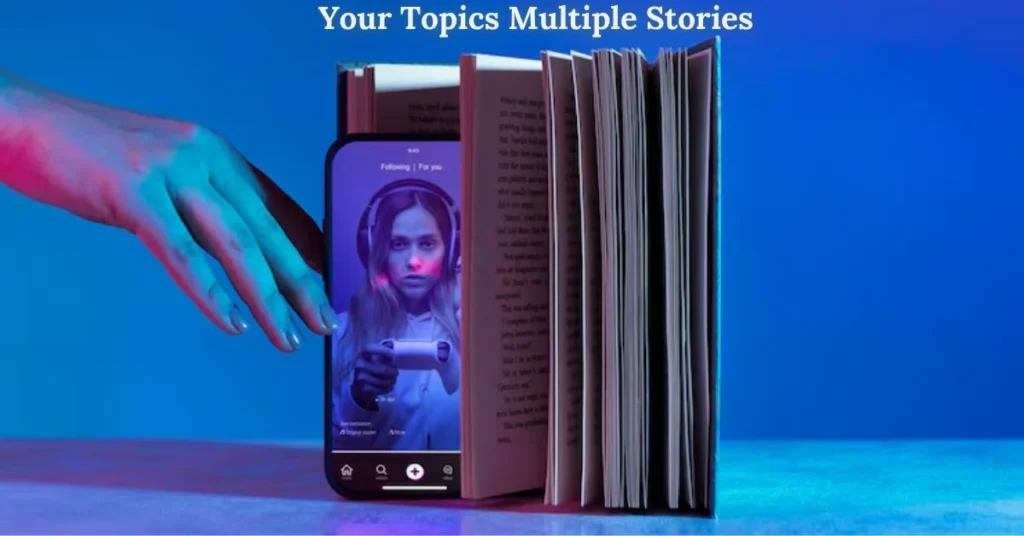Introduction
Why Storytelling Still Matters in 2025
Storytelling isn’t just entertainment anymore—it’s a core part of digital communication. In a noisy online world, stories break through the clutter. They humanize brands, inspire action, and make content memorable for your topics multiple stories.
What Changed in Reader Expectations?
Today’s audience doesn’t want just one angle. They crave depth, diversity, and different points of view. A single-thread narrative often feels flat and forgettable. That’s why your topics multiple stories is making waves—it delivers more value in one go.
Understanding “Your Topics Multiple Stories”
Definition and Concept
“Your topics multiple stories” is a storytelling technique where you weave together multiple related narratives around a single central theme. Instead of just one beginning, middle, and end, you have several subplots that inform and complement each other.
How It Differs from Traditional Storytelling
Unlike linear storytelling, this technique is modular. Each story adds a new layer, a new perspective, or a new emotional angle. Think of it like Netflix’s anthology series—all under the same theme, but each episode unique.
The Psychology Behind Multiple Stories
How Our Brains React to Interwoven Narratives
Our brains love patterns and connections. Multiple stories activate more cognitive pathways, making content more interesting and easier to remember.
Emotional Engagement and Memory Retention
When people relate to even one of the stories, they stay hooked. Multiple narratives increase the odds of emotional resonance, which leads to higher engagement and better recall.
Benefits of Using Multiple Stories in Content
Enhanced Engagement and Time-on-Page
Readers stick around longer because there’s more to uncover. It’s like reading a book of short stories—just one more before I go!
Catering to Diverse Audiences
Different stories speak to different readers. You cast a wider net and keep more people interested.
SEO and Content Depth
More stories mean more keywords, more internal links, and richer context—everything Google loves.
Where to Use the “Your Topics Multiple Stories” Technique
Blogging
Perfect for lifestyle, travel, and business blogs. Turn “How I Started My Freelance Career” into three mini-stories of struggle, breakthrough, and success.
Marketing Campaigns
Brands use this to tell customer success stories, team stories, and product evolution—making marketing human.
Corporate Branding
Highlight your company values through stories from different departments. HR, tech, leadership—everyone has a voice.
Educational Content
Explain complex topics using stories from various fields or time periods. Learning becomes immersive and relatable.
YOU MUST READ: Quartist Revolution: Mastering 4 Disciplines for Future Success
Step-by-Step Guide to Crafting Multi-Story Content
Choose Your Main Topic
Start with a central theme. For example, “Remote Work.”
Identify Relevant Sub-Narratives
Find real or fictional mini-stories—like a digital nomad in Bali, a mom juggling kids and Zoom calls, or a manager leading a virtual team.
Structure with Clear Transitions
Use headers, lines, or quotes to signal a new story. Keep readers oriented.
Keep Each Story Meaningful
Avoid fluff. Every narrative must add insight, emotion, or relevance to the main topic.
Tools and Platforms That Support This Format
CMS with Rich Content Blocks
Platforms like WordPress and Webflow let you visually organize content to separate stories while keeping them connected.
AI Tools for Narrative Mapping
Use tools like Notion, Scrivener, or even mind-mapping apps to plan the multiple storylines and ensure cohesion.
Real-World Examples of Multi-Story Content Done Right
Top Brands Leveraging the Technique
Nike often features multiple athlete stories in one campaign, tied together by a common slogan or value like perseverance.
Viral Blog Posts Using Multiple Stories
Medium and Substack authors are doing this brilliantly—writing essays that contain three different yet relatable life stories under one topic.
Mistakes to Avoid When Using Multiple Stories
Overloading the Reader
Don’t add too many plots. Three to five strong stories work better than a tangled mess of ten.
Losing Narrative Focus
All stories must orbit around your main topic. No detours.
Poor Story Transitions
Make transitions smooth. Use connecting sentences or themes that link one story to the next.
How to Maintain Flow and Coherence
Narrative Hooks
Start each story with a hook. Ask a question, set a scene, or introduce a compelling character.
Consistent Voice and Tone
Whether it’s humorous, serious, or inspiring—maintain a single tone throughout to avoid confusing your readers.
The Future of Storytelling
Role of AI in Multi-Narrative Content
AI tools can now help generate alternative perspectives, character backstories, and personalized reader experiences—taking multiple stories to the next level.
Personalization and Dynamic Content
Imagine your blog adapting its stories based on who’s reading it. With smart content delivery, one article can tell different stories to different readers.
Conclusion
“Your topics multiple stories” isn’t just a trend—it’s the evolution of storytelling in the digital age. It reflects the complexity of human experience, the diversity of reader expectations, and the endless potential of content creation. Whether you’re a blogger, marketer, or educator, weaving multiple stories into your topics is the superpower you didn’t know you needed. Ready to change the game?
YOU MUST READ: stufferdnb: Revolutionizing Digital Growth with Cutting-Edge Tools
FAQs
What is the “your topics multiple stories” technique?
It’s a content strategy that uses multiple related narratives to explore one topic, offering richer insights and emotional engagement.
Is this method suitable for beginners?
Absolutely! Start with two or three mini-stories and grow from there. The key is clarity and cohesion.
Can I use this strategy for SEO content?
Yes, it boosts keyword density, improves readability, and increases user time on page—all great for SEO.
How many stories should I include in a single post?
Ideally, 2 to 5 stories. More than that can overwhelm the reader unless you’re writing a deep-dive guide.
Are there any tools to help structure multi-story writing?
Yes! Tools like Notion, Scrivener, and AI assistants can help you map narratives and organize flow easily.






